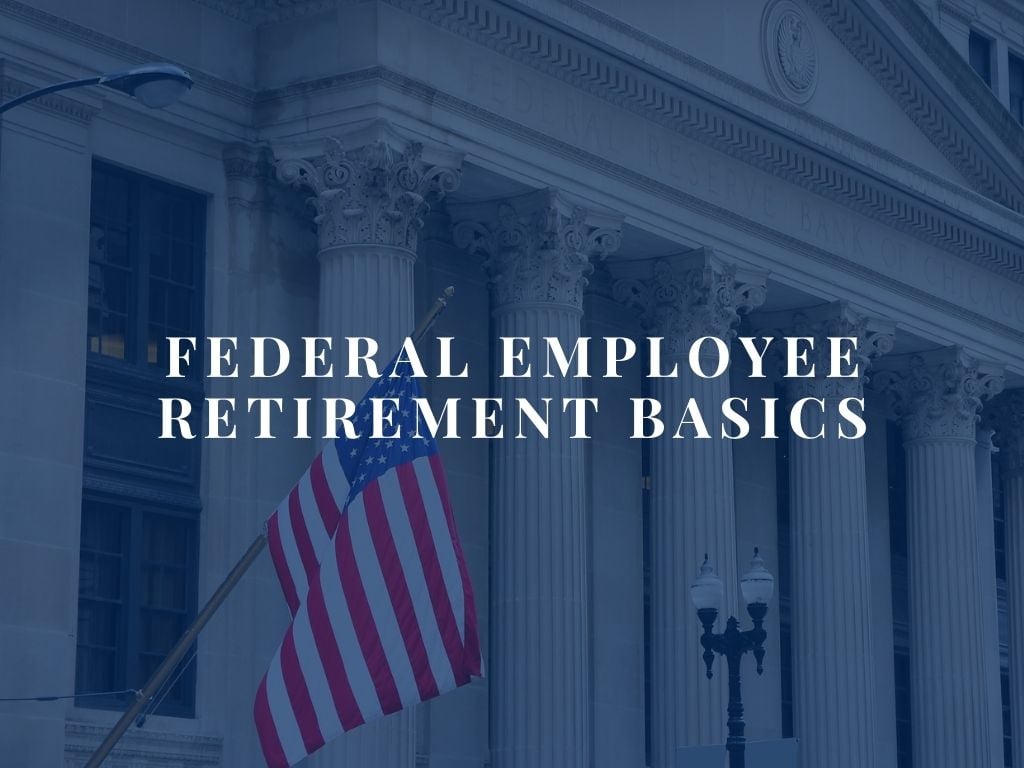
As retirement plan advisors, we understand that as pension plans in the private sector become less common, the retirement pension plan for federal employees remains an attractive retirement option. If you’re a federal employee or considering becoming a federal employee, here are the basic elements of the Federal Employee Retirement System.
Qualifying for Federal Employee Retirement
The Federal Employee Retirement System (FERS) is the retirement plan for all civilian employees of the U.S. government. Employees of the judicial, legislative and executive branches of the federal government all qualify for the FERS. Members of the U.S. military or those employed by state or local governments do not qualify. Retirement benefits from FERS come from three places: the basic benefit plan, Social Security and the Thrift Savings Plan (TSP).
Basic Benefit Plan
The first of the three parts of the FERS is the basic benefit plan. Through this part of the plan, you receive a set amount based on how long you’ve been employed by the federal government and your highest three consecutive years of earnings. The amount you paid does not impact the amount you receive from the basic benefit plan when you retire.
The years your benefits are based on are referred to as the “high-3” average. This is the average of your annual base salary from your highest-earning three consecutive years. For most, this will be the three years prior to retirement, though if you earned more earlier in your career it will be based on those years.
The benefits you receive from the basic benefit plan is calculated by multiplying your high-3 salary average by your years of service and then multiplying that by 1% if you’re under 62 or have less than 20 years of service, or by 1.1% if you’re over 62 and have 20 years or more of service.
Social Security
Those covered under FERS also pay into Social Security. How much you pay in and the benefits you’re eligible for are the same as for private employees who pay into Social Security and depend on your income level.
Employees contribute 6.2% of wages to Social Security (up to the taxable maximum) and their employer contributes a matching amount. Those who are self-employed must contribute the entire 12.4% themselves. The taxable maximum is updated annually to account for inflation. As of 2022, the taxable maximum is $147,000.
Thrift Savings Plan
The final of the three prongs of the Federal Employee Retirement System is the Thrift Savings Plan (TSP). The Thrift Savings Plan is not a pension plan, and instead works much like a 401(k) does in the private sector. Each pay period, the agency that employs you automatically deposits your contribution of 3 to 5 percent (depending on your hire date or preference) of your base pay into your TSP. Your employer will match those funds deposited dollar for dollar up to 3% and 50 cents on the dollar on the next 2%. Like a 401(k), funds invested in a TSP are tax-deferred, and you can choose the funds in which your money is invested (from a list of fund choices).
Receiving Federal Employee Retirement Benefits
There are four main options for qualifying for your benefits, though some exceptions exist under certain circumstances or for employee groups, such as firefighters or law enforcement.
- Voluntary retirement. This is what’s typically considered regular retirement. As long as you meet all the necessary requirements, you’ll receive your full benefits. Be sure to research your minimum retirement age and how it affects your benefits.
- Disability retirement. If you’ve been employed for 18 months or more and qualify for disability, you can receive benefits through FERS.
- Early retirement. You can retire as early as 50 with 20 years of service or at any age with 25 years of service, but you won’t be eligible for your full benefits.
- Deferred retirement. Those who leave federal service before retirement, but had at least five years of service, may receive a deferred annuity under certain circumstances.
Conclusion
Retirement planning involves the consideration of many complex factors, regardless of whether you work in the public or private sector. While we’ve covered some basics about the FERS that all federal employees should know, if you’re getting serious about retirement, consider working with a financial advisor to help you create a plan to make the most of your retirement savings options. Contact us to schedule a complimentary informational meeting.
Additional Resources:
Investopedia.com, "What Is the Federal Employees Retirement System (FERS) and How Does It Work?"
OPM.gov, "Retirement Services, FERS INFORMATION"
OPM.gov, "Retirement Services, RETIREMENT FAQS"
OPM.gov, "Retirement Services, BENEFITS OFFICERS CENTER"
OPM.gov, "Retirement Services, FERS INFORMATION"
USA.gov, "Pay and Benefits for Federal Employees"
askFEDweek.com, "Retirement Eligibility & FERS Minimum Retirement Age (MRA)"
OPM.gov, "Retirement Services, FERS INFORMATION"
Need a Retirement Advisor?
If you are currently looking for help with retirement planning, contact us. We are happy to schedule an introductory meeting at your convenience.


